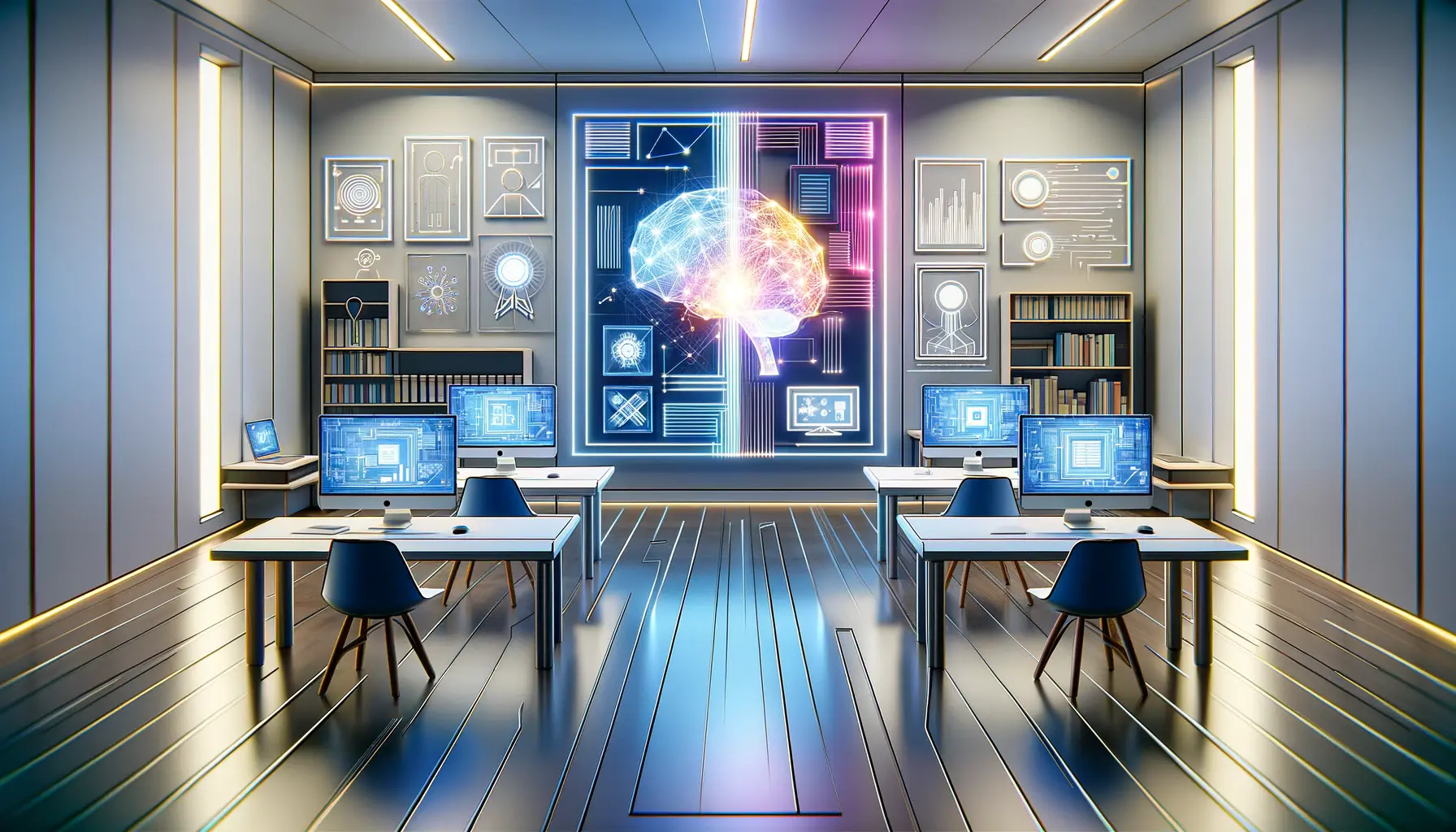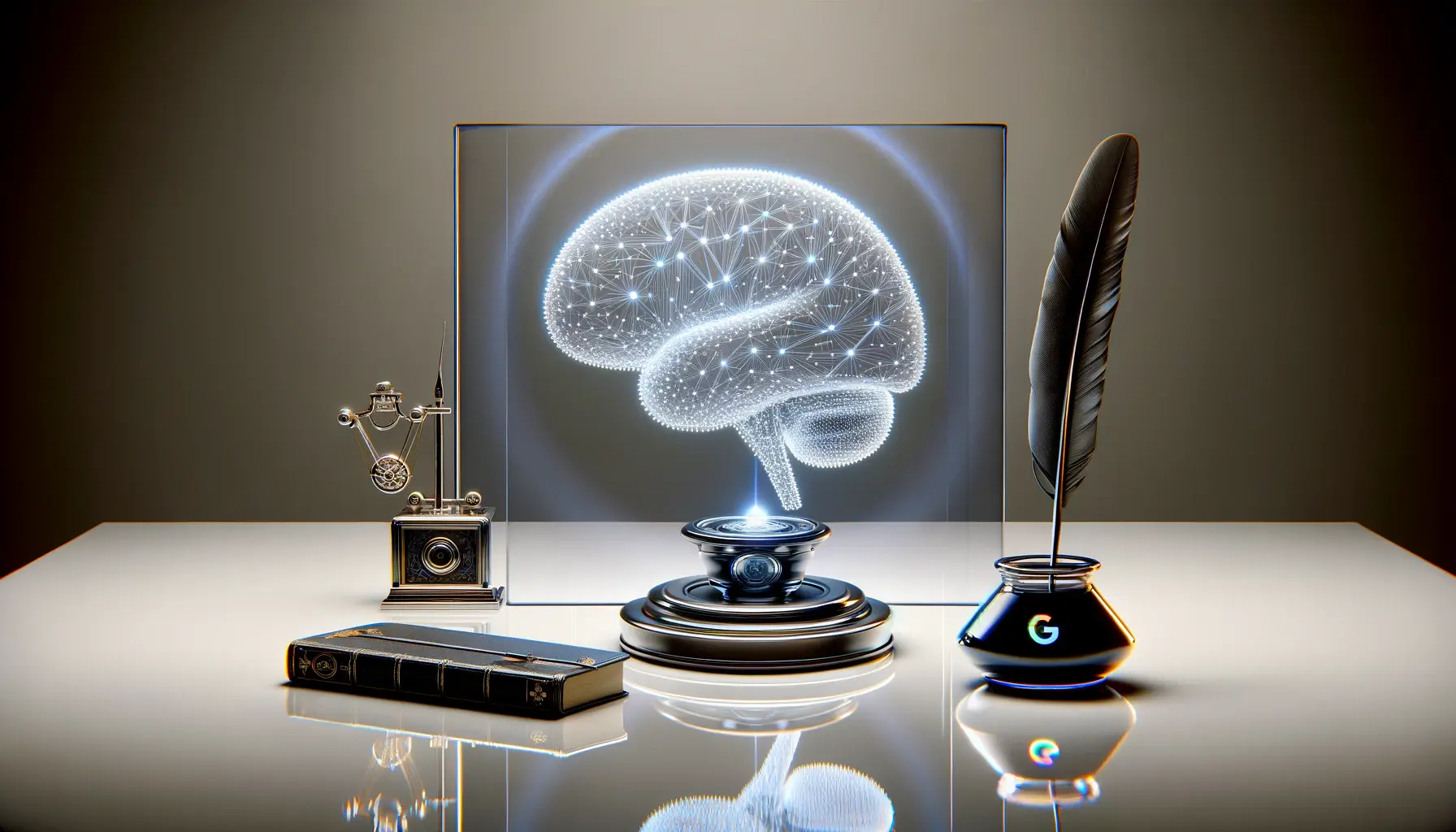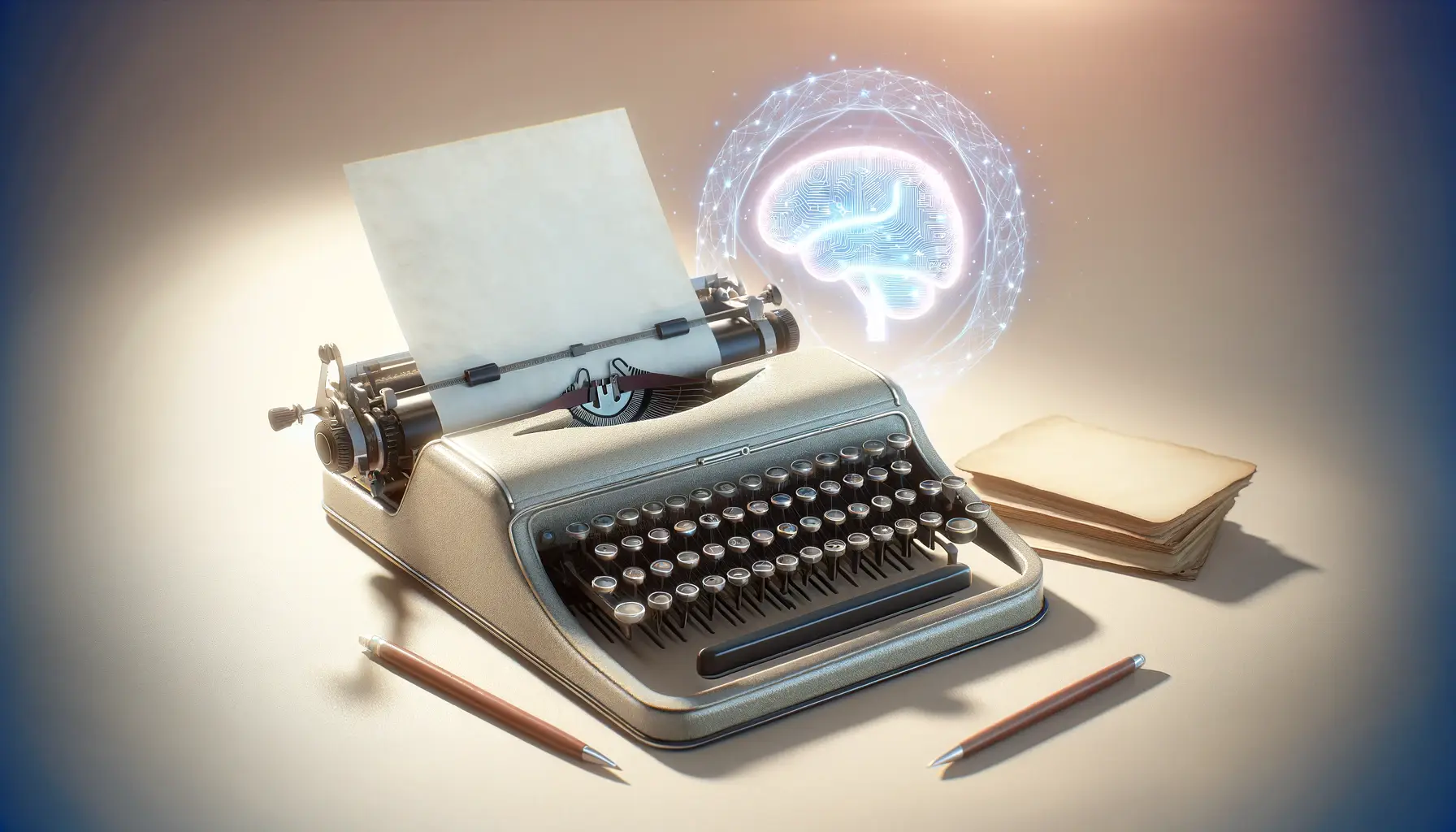The advent of artificial intelligence in creative realms has marked a significant milestone in how we approach and understand creativity.
Google’s Bard, an innovative tool powered by the tech giant’s foray into generative AI, stands at the forefront of this evolution.
Designed to assist, inspire, and enhance the creative writing process, Bard leverages Google’s vast data and sophisticated algorithms to offer a unique blend of creativity and technology.
This article delves into the multifaceted features of Google’s Bard, exploring how it can be a game-changer for writers, poets, and anyone looking to infuse a touch of AI magic into their creative endeavors.
At its core, Bard is engineered to understand and generate human-like text, drawing from an extensive pool of knowledge and linguistic patterns.
This capability not only makes Bard a powerful tool for generating ideas and content but also positions it as a collaborative partner in the creative writing process.
Whether you’re battling writer’s block, seeking new perspectives, or simply exploring the boundaries of AI-assisted creativity, Bard offers a window into the future of creative writing.
- Understanding Bard’s Core Capabilities
- Interactive Writing and Editing Features
- Overcoming Writer’s Block with Bard
- Integrating Bard with Other Google Services
- Personalizing the Writing Experience
- Exploring New Genres and Styles
- Future Developments and Bard’s Potential
- Unveiling the Horizon: The Future of Creative Writing with Google’s Bard
- Frequently Asked Questions About Google’s Bard
Understanding Bard’s Core Capabilities
Real-time Data Access and Learning
One of Bard’s standout features is its ability to access real-time data, keeping its knowledge base current and expansive.
Unlike traditional writing tools that rely on static databases, Bard’s integration with the web allows it to pull in the latest information, trends, and cultural nuances.
This feature not only enriches the content it generates but also ensures that writers have access to up-to-date references and information.
Furthermore, Bard’s learning mechanism is designed to evolve continuously.
By analyzing interactions and feedback, it refines its understanding of language and creativity, offering increasingly sophisticated and nuanced responses.
This dynamic learning process underscores Bard’s potential to become an even more intuitive and helpful tool for creative writers over time.
Enhanced Creativity and Idea Generation
At the heart of Bard’s appeal is its potential to enhance creativity.
By generating suggestions, ideas, and even complete drafts, Bard can inspire writers with new perspectives and possibilities.
Whether you’re looking for a fresh plot twist, character inspiration, or poetic imagery, Bard’s AI-driven creativity can spark your imagination in unexpected ways.
Moreover, Bard’s versatility extends to various forms of creative writing.
From short stories and novels to poetry and song lyrics, Bard’s algorithms are adept at mimicking a wide range of styles and formats.
This adaptability makes it a valuable tool for writers experimenting across genres and forms.
Bard’s real-time data access and continuous learning make it a cutting-edge tool for creative writers, offering fresh perspectives and enhancing creativity across genres.
Interactive Writing and Editing Features
Google’s Bard is not just about generating content; it’s also about refining and perfecting it.
The platform offers interactive writing and editing features that stand to revolutionize the way writers approach their craft.
Through a combination of AI insights and user input, Bard facilitates a collaborative editing process, making it easier to achieve the desired tone, style, and clarity in your writing.
One of Bard’s most compelling editing features is its ability to suggest improvements and alternatives.
This function is particularly useful for overcoming common writing challenges, such as repetitive language, unclear sentences, or lack of coherence.
By analyzing the text, Bard can propose changes that enhance readability and impact, allowing writers to elevate their work with precision and creativity.
Customization and Style Adaptation
- Bard’s AI is designed to adapt to individual writing styles, learning from user preferences and feedback. This means that over time, Bard becomes more attuned to your unique voice, offering suggestions that align more closely with your personal style.
- Additionally, Bard offers customization options that let writers specify the tone, formality, and even the intended audience for their work. Whether you’re aiming for a light-hearted blog post or a scholarly article, Bard can adjust its suggestions accordingly.
Collaborative Writing Sessions
- Bard’s platform supports real-time collaboration, enabling multiple users to work on a document simultaneously. This feature is invaluable for co-authored projects, brainstorming sessions, or any scenario where collective input can enrich the creative process.
- Feedback and revisions can be shared instantly, making it easier to iterate and evolve ideas together. Bard’s AI can serve as a mediator, offering neutral suggestions that help resolve creative differences and enhance the collaborative experience.
The interactive writing and editing features of Google’s Bard, including customization options and support for collaborative writing, underscore its potential as a dynamic tool for enhancing the creative writing process.
Overcoming Writer’s Block with Bard
Writer’s block is a common challenge that can hinder the creative process, leaving writers feeling stuck and uninspired.
Google’s Bard offers innovative solutions to this age-old problem, leveraging AI to provide a continuous stream of ideas and inspiration.
By interacting with Bard, writers can overcome creative hurdles and maintain momentum on their projects.
Bard’s approach to combating writer’s block involves a combination of suggestion generation and exploratory prompts.
These features encourage writers to think outside the box and explore new directions for their work.
Whether you need a fresh plot idea, a character development twist, or simply a nudge to get the words flowing, Bard can provide the spark needed to break through the block.
Exploratory Prompts and Idea Generation
- Bard can generate prompts that challenge writers to think differently about their topics or characters. These prompts can lead to unexpected and exciting creative paths.
- The tool also offers idea generation capabilities, providing writers with a list of concepts, themes, or scenarios to explore in their writing. This can be particularly helpful for brainstorming sessions or when starting a new project.
Interactive Dialogue for Inspiration
- Engaging in an interactive dialogue with Bard can simulate a brainstorming session with another person. By asking questions and exploring responses, writers can uncover new insights and perspectives that fuel creativity.
- This conversational approach allows for a dynamic exchange of ideas, where Bard’s AI-driven responses can inspire writers to view their work from different angles and discover innovative solutions to creative challenges.
Bard’s ability to provide exploratory prompts, generate ideas, and engage in interactive dialogues makes it an invaluable tool for overcoming writer’s block and reinvigorating the creative writing process.
Integrating Bard with Other Google Services
The integration of Bard with other Google services amplifies its utility, transforming it into a powerhouse tool for research, content creation, and more.
This synergy between Bard and Google’s ecosystem enables a seamless flow of information and functionality, enhancing productivity and creativity for writers and content creators.
By tapping into services such as Google Search, Google Docs, and Google Drive, Bard can pull in data, reference materials, and even draft content in a collaborative workspace.
This interconnectedness not only streamlines the writing process but also ensures that the information used is accurate and up-to-date.
Seamless Research with Google Search
- Bard’s ability to access Google Search directly within its interface allows writers to conduct research without leaving their creative workspace. This feature is invaluable for verifying facts, exploring topics, and gathering background information.
- Furthermore, Bard can summarize and incorporate search results into the creative content, providing writers with a rich source of information to enhance their work.
Collaboration and Document Management
- Integration with Google Docs and Google Drive facilitates a collaborative environment where writers can work together in real-time. Bard’s suggestions and edits can be directly applied to documents, making the revision process more efficient and interactive.
- This integration also simplifies document management, allowing for easy access, sharing, and organization of writing projects across Google’s platform.
The integration of Bard with Google’s suite of services enhances the tool’s functionality, making it a versatile assistant for writers seeking to streamline their research, collaboration, and document management processes.
Personalizing the Writing Experience
One of the most compelling aspects of Google’s Bard is its ability to personalize the writing experience.
This personalization enhances the creative process, making Bard not just a tool, but a partner in writing.
By learning from interactions and adapting to individual preferences, Bard offers a tailored experience that resonates with each user’s unique style and needs.
This level of customization extends to various facets of writing, from genre and tone to language and format, ensuring that Bard’s contributions are not only helpful but also aligned with the writer’s vision.
Adapting to User Preferences
- Bard’s AI is designed to learn from each interaction, gradually adapting to the user’s writing style and preferences. This means that the more you use Bard, the more it understands your unique voice and the nuances of your creative expression.
- Such adaptation allows Bard to offer suggestions and content that feel more natural and in harmony with the user’s own writing, enhancing the overall quality and authenticity of the creative output.
Customizable Writing Aids
- Beyond adapting to writing styles, Bard allows users to customize the assistance it provides. Whether you’re seeking help with brainstorming, drafting, or editing, Bard can be configured to focus on the aspects of writing that you find most challenging or time-consuming.
- This level of customization ensures that Bard’s assistance is not only relevant but also maximally effective, providing targeted support that complements the writer’s skills and enhances their creative process.
By personalizing the writing experience, Bard becomes more than just an AI tool; it becomes a creative companion that understands and adapts to your unique writing journey, offering support that is both meaningful and impactful.
Exploring New Genres and Styles
The versatility of Google’s Bard extends beyond mere content generation and editing, offering writers the opportunity to explore new genres and styles with ease.
This feature is particularly beneficial for those looking to diversify their writing portfolio or venture into unfamiliar creative territories.
Bard’s extensive database and adaptive learning capabilities make it an ideal tool for experimentation and discovery in the vast landscape of literary forms.
Whether you’re a seasoned writer aiming to break out of a creative rut or a novice seeking to expand your horizons, Bard’s ability to generate content across a spectrum of genres and styles can open up new avenues for creative expression.
Genre Exploration
- With Bard, writers can experiment with genres outside their comfort zone without the steep learning curve typically associated with such ventures. From science fiction and fantasy to historical fiction and beyond, Bard can provide insights, tropes, and stylistic elements characteristic of each genre.
- This exploration not only broadens a writer’s creative repertoire but also enriches their understanding of narrative structures and thematic diversity.
Style Imitation and Innovation
- Bard’s AI is capable of mimicking the writing styles of famous authors, offering writers a unique opportunity to learn from the masters. By analyzing and generating text in the style of Hemingway, Woolf, or other literary figures, Bard can help writers study the nuances that define these iconic voices.
- Moreover, Bard encourages stylistic innovation by blending elements from various authors or genres, fostering a creative environment where new writing styles can emerge. This process of imitation and innovation serves as a powerful tool for writers seeking to develop a distinct voice.
Bard’s capacity for genre exploration and style imitation not only facilitates creative growth but also empowers writers to push the boundaries of conventional storytelling, paving the way for new and exciting literary achievements.
Future Developments and Bard’s Potential
The journey of Google’s Bard in the realm of creative writing is just beginning.
With ongoing advancements in AI and machine learning, the potential for Bard to revolutionize the creative process is immense.
Future developments are anticipated to enhance Bard’s capabilities, making it an even more powerful tool for writers, educators, and anyone interested in exploring the intersection of technology and creativity.
As Bard continues to evolve, it promises to offer more nuanced understanding, greater interactivity, and deeper personalization, further blurring the lines between human and AI-generated content.
The future of creative writing, with Bard at its side, looks to be not only more productive but also more innovative and inclusive.
Enhanced Learning Algorithms
- Future iterations of Bard are expected to feature enhanced learning algorithms that better understand context, subtlety, and the complex nuances of human emotion and thought. This will enable Bard to offer even more precise and relevant suggestions, elevating the quality of creative output.
- Moreover, as Bard becomes more adept at learning from user interactions, it will offer a more personalized and intuitive writing experience, closely mirroring the writer’s intent and style.
Broader Creative Applications
- The scope of Bard’s application is set to expand, encompassing not just writing but other creative domains such as music composition, visual arts, and digital storytelling. This multidisciplinary approach will open new creative avenues, fostering cross-pollination of ideas and techniques across different artistic fields.
- With Bard’s help, creators will be able to seamlessly integrate text, visuals, and sound, crafting multimedia narratives that engage audiences in novel and immersive ways.
The future developments of Bard hold the promise of transforming the landscape of creative writing and beyond. By harnessing the power of AI, Bard is poised to become an indispensable ally in the creative process, pushing the boundaries of what’s possible and inspiring a new generation of storytellers.
Unveiling the Horizon: The Future of Creative Writing with Google’s Bard
In the evolving landscape of creative writing, Google’s Bard emerges as a beacon of innovation, blending the artistry of human creativity with the precision of artificial intelligence.
As we’ve explored the multifaceted features of Bard, from overcoming writer’s block to exploring new genres and styles, it’s clear that Bard is not just a tool but a transformative force in the creative world.
The potential of Bard to revolutionize creative writing is vast, promising a future where AI and human creativity coalesce to produce unprecedented forms of literary expression.
The Symphony of Creativity and Technology
The journey through Bard’s capabilities reveals a symphony of creativity and technology, where each feature plays a crucial role in enhancing the writing process.
Bard’s real-time data access, personalized writing experiences, and the ability to explore new creative territories exemplify how technology can elevate human creativity to new heights.
As Bard continues to evolve, its potential to serve as a muse, editor, and collaborator for writers around the globe is boundless.
Charting the Future Course
- Enhanced AI Learning: The future of Bard lies in the refinement of its learning algorithms, promising even more personalized and contextually aware writing assistance.
- Expansion into Multidisciplinary Creativity: Bard’s potential expansion into other creative fields such as music and visual arts opens up exciting possibilities for cross-disciplinary innovation.
- Community and Collaboration: As Bard becomes more integrated with Google’s ecosystem, it will foster a community of creators, encouraging collaboration and shared growth.
In conclusion, Google’s Bard stands at the forefront of a new era in creative writing, offering a glimpse into a future where AI not only assists but also inspires and propels human creativity forward.
With its ever-expanding capabilities and potential for personalization, Bard is poised to become an indispensable tool for writers, artists, and creators, reshaping the creative landscape in ways we are only beginning to imagine.
As we look to the future, the partnership between human creativity and artificial intelligence, exemplified by Bard, promises to unlock new realms of possibility, making the act of creation more accessible, collaborative, and boundless than ever before.
Frequently Asked Questions About Google’s Bard
Explore the most common inquiries surrounding Google’s Bard and its capabilities in creative writing.
Bard is a free experimental AI chatbot created by Google, designed to generate text and answer questions by analyzing web information.
Bard uses Google’s large language models to understand and generate human-like text, pulling data from the web for real-time information.
Yes, Bard can generate ideas and prompts to inspire writers, making it a useful tool for overcoming writer’s block.
Bard can generate content across a wide range of genres, from fiction and poetry to non-fiction and technical writing.
Yes, Bard learns from user interactions to better match individual writing styles and preferences over time.
Bard is integrated with various Google services, enhancing its capabilities for research, collaboration, and content creation.
Bard offers new perspectives and ideas, supports genre exploration, and assists with style imitation, enhancing overall creativity.
Future developments include enhanced learning algorithms, expansion into multidisciplinary creativity, and deeper personalization.














